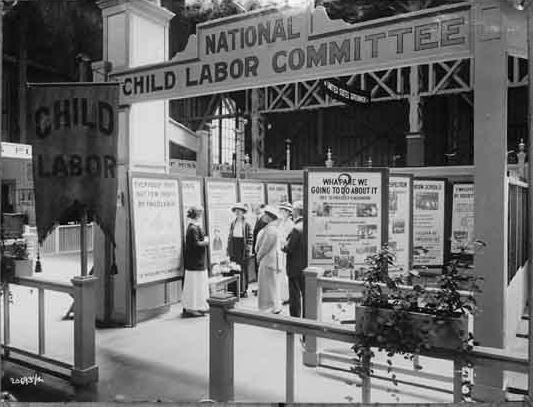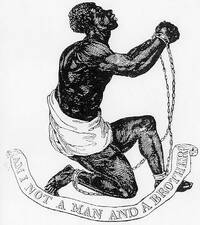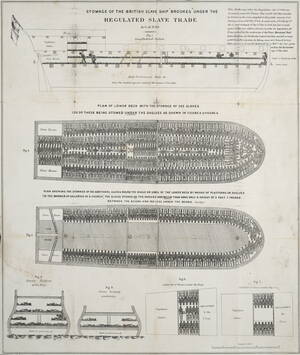This is an old revision of the document!
PBS120Y: Why Victim Photography?
Recommended Co-requisite: PBS121Y
Presentation
Slides are available here: http://media.trtl.ca/abortion/victim-imagery.html
- press the space bar to advance to the next step
- press “s” if you want to see the presenter's view, along with all the notes
CCBR believes that imagery is a powerful tool that must be incorporated into its educational efforts. A major component of our EndTheKilling plan is the saturation of Canadian culture with images of the victims of abortion. There are three primary reasons that we use abortion victim photography in all our projects:
- History: Our strategy has worked for social reform movements in the past
- Resistance: The abortion movement has said our strategy works and is a threat
- Results: We have the fruits of our work to prove our success.
History
- CCBR's work is grounded in lessons learned from successful social reform movements. It simply models the concepts from these organizations in its fight against abortion. Groups that have been historically effective in changing society's perspective and behaviour towards an injustice typically had three characteristics in common:
- They exposed an injustice using shocking images and evidence.
- They confronted the culture.
- They were willing to endure persecution.
Many movements have resorted to images, especially graphic images, to convey a message to the culture. Certainly that is not the only thing which occurred, but it was often central. Images have long been a useful and essential tool to teach things which words alone cannot convey. In particular, injustice that is not seen is rarely understood. One such movement that has successfully demonstrated a keen understanding of this principle is the abolitionist movement in Britain.
Abolitionists
- The slave trade was deeply ingrained into the British economy for centuries, but was out of sight for the British public; empty ships would leave England, go pick up slaves in Africa, leave the slaves in the Americas, and come back laden with goods. Most British people had never even seen a person with dark skin.
To the British abolitionists, the challenge of ending slavery in a world that considered it fully normal was as daunting as it seems today when we consider challenging the entrenched wrongs of our own age: the vast gap between rich and poor nations, the relentless spread of nuclear weapons, the multiple assaults on the earth, air, and water that must support future generations, the habit of war. None of these problems will be solved overnight, or perhaps even in the fifty years it took to end British slavery. - Adam Hochschild, Bury the Chains 1)
- In an age before photography, social reformers in Great Britain knew that in order to end the slave trade, they would have to expose the slave trade. Abolitionists like William Wilberforce and Thomas Clarkson forced slavery into the public consciousness so that the British had to confront it. As one of the first grassroots human rights campaigns, they used evidence of the barbarism of slavery. They shared first-hand testimonies from people who conveyed the deplorable conditions of the slave ships. They showed chains and other equipment used to abuse Africans. And images of slavery were key to their educational efforts.
Am I not a Man and a Brother?
Public ignorance and indifference began to change thanks to work of abolitionist Josiah Wedgewood.Wedgwood mass-produced medallions depicting the seal for the Society for Effecting the Abolition of the Slave Trade and had them widely distributed. The medallion made a simple plea for the humanity and rights of slaves: “Am I not a Man and a Brother?”
It quickly saturated society and became the most famous image of a black person in all of 18th-century art. Clarkson wrote, “Ladies wore them in bracelets, and others had them fitted up in an ornamental manner as pins for their hair. At length the taste for wearing them became general, and thus fashion, which usually confines itself to worthless things, was seen for once in the honorable office of promoting the cause of justice, humanity and freedom”.
But simply showing the humanity of slaves wasn’t enough—some people argued that their lives as slaves were actually better than their lives in Africa, and would be even worse if they were freed. The abolitionists also had to show the inhumane nature of slavery.
The Slave Ship Brookes
In 1788, they began using one of their most powerful tools yet: a drawing of the inside of the slave ship “Brookes.”
“[The diagram] gave measurements in feet and inches while showing the slaves closely lined up in rows, lying flat, bodies touching one another or the ship’s hull… The diagram began appearing in newspapers, magazines, books, and pamphlets; realizing what a powerful new weapon it had, the [abolitionist] committee also promptly printed up more than seven thousand copies as posters, which were hung on the walls of homes and pubs throughout the country.” 2)
- Abolitionists afraid to show this pic to elderly supporters, thought it would give them a heart attack; historian Eric Metaxas said that for the people of the day, to look upon this picture was like looking into Hell
source??
In the face of hundreds of years of slavery, after the abolitionists started exposing the reality of slavery, it took only 20 years to abolish the slave trade in the British empire. Nations around the world soon followed suit.
stuff about Wilberforce introducing legislation–then changing strategies. Need sources on this*
Anti-Child Labour Movement
Child labour increased in the US during the Industrial Revolution. As society moved from primarily agrarian to industrial, children were a cheap source of labour for factories, mines, and other places. They were being forced to do hard labour often from 6am to midnight, working on starvation wages, losing any chance of childhood and education; many also lost limbs, and sometimes lives, while they worked.
“Child labor in this country was so widespread, and so much a part of economic reality in the early part of the 19th century, that no one looked toward or expected its abolition” -Report on the Youth Labor Force, Bureau of Labor Statistics [2000] 3)
The National Child Labour Committee worked to stop the exploitation of children through labour. They recognized that public policy around child labour would not change until public opinion changed. In fact, one of their leaders, the outspoken activist Florence Kelley, wrote the following concerning legislation around child labour: “Our first task is to give wide publicity to the disease-breeding conditions of the tenements, thus leading the legislature to make a fresh attempt at outright prohibition…Until that is done, all attempts at regulation of manufacture are illusory; they simply lull the public conscience vainly and cruelly, when it ought to be alert and militant.” 4)
In 1908, an American photographer, Lewis Hine, was hired by the U.S. National Child Labour Committee to photograph images of children working long hours, often in dangerous conditions, being robbed of their childhood.
- “To gain access to factories, mines, sweatshops, and mills, and to use his camera freely, Hine often had to disguise his real purpose…he [posed] as a fire inspector, or an insurance salesman, or an industrial photographer who was after pictures of buildings and factory machinery” -Russell Freedman, Author of Kids At Work: Lewis Hine and the Crusade Against Child Labor [1994]
- Hine's poignant pictures showed the public the reality of what labour in factories, mines, and fields did to young children.
- Hine and the NCLC worked to saturate the country with images of the injustice. The NCLC distributed pamphlets and flyers containing the images, alongside arguments against child labour; newspapers and magazines published them; and large displays were set up in public places, such as at fairs and expositions.
- “These photos traveled the nation on exhibit panels, poster-sized display boards that the reformers brought to their own conferences, to city streets, and to expositions… In these panels, Hine's images are clipped out of their backgrounds, arranged into charts, shaped into diagrams, circled and underlined and surrounded by slogans and calls to action” -Library of Congress [1954]
 National Child Labor Committee's exhibit for the Panama-Pacific International Exposition of 1915 in which they use various displays composed of Hine's photos [Library of Congress NCLC Collection, 1915]
National Child Labor Committee's exhibit for the Panama-Pacific International Exposition of 1915 in which they use various displays composed of Hine's photos [Library of Congress NCLC Collection, 1915]
- His life was threatened several times because of what he was doing, and when people complained, he said:
“Perhaps you are weary of child labor pictures. Well, so are the rest of us, but we propose to make you and the whole country so sick and tired of the whole business that when the time for action comes, child labor pictures will be records of the past.”
12 years after he started taking these photos the number of child labourers was cut in half (
Civil Rights Movement

https://www.endthekilling.ca/training/classroom/reform/civilrights

Syrian Refugee Crisis
Syrian refugee crisis: has been going on since March 2011; 6.6 mill people internally displaced, 22,000 people lost their lives
- countries knew it was happening but no one doing anything; majority of the public didn’t know/care
- wasn't until Sept. 2015 when a Syrian boy by the name of Alan Kurdi, 3 yrs old, washed ashore on the Mediterranean sea, when consciousness awakened to the fact that something had to be done
- pressure on government skyrocketed, and though people may disagree on the best way to deal with it, that one image spurred millions of people to demand action
> “There was nothing left to do for him. There was nothing left to bring him back to life. I thought, This is the only way I can express the scream of his silent body.” - Nilüfer Demir, photographer of AK 7)
“[The] image whipped around social media within hours, accumulating potency with every share. News organizations were compelled to publish it—or publicly defend their decision not to. And European governments were suddenly compelled to open closed frontiers. Within a week, trainloads of Syrians were arriving in Germany to cheers, as a war lamented but not felt suddenly brimmed with emotions unlocked by a picture of one small, still form.” - Time magazine8)
- all of these cont. b/c hidden – need to make imposs. to ignore; Gregg Cunningham (“Injustice…”)
Resistance
- We’re also encouraged by the response we have gotten from people who support and promote abortion, who make their livelihoods from the lives of children
- Frances Kissling of Catholics for a Free Choice and Kate Michelman, former president of NARAL Pro-Choice America:
- 2008: “In recent years the anti-abortion movement successfully put the nitty-gritty details of abortion on public display, increasing the belief that abortion is serious business and that some societal involvement is appropriate.”
- Kissling 2012: “The fetus is more visible than ever before, and the abortion-rights movement needs to accept its existence and its value. It may not have a right to life, and its value may not be equal to that of the pregnant woman, but ending the life of a fetus is not a morally insignificant event.”
- Joyce Arthur is the executive director of the Abortion Rights Coalition of Canada
- In a webinar she gave a few years ago which one of our volunteers attended, the volunteer asked in the Q&A portion: “What is the biggest threat to reproductive rights in Canada?” and she responded that it was CCBR and our pro-life activism on campus, especially our GAP displays
- - volunteer Sarah submitted a question to Joyce at the end of the course, “What is the biggest threat to a woman’s reproductive right in Canada” - Joyce Answer “The Genocide Awareness Project.”
- Erynn Brook from the RRJC– FB status: “There's a lot of people moving through this area on little sleep and little food, and as a media-literate community we all need to recognize the power of violent images and how manipulative it is to target students in these conditions.”
Results

- Testimonies:
- Baby Ava?
- Baby Noah?
- Other stories? So many to choose from…
- Statistical effectiveness
“[T]he Canadian Centre for Bio-Ethical Reform (CCBR) commissioned several sets of a scientific survey to gauge public opinion on abortion before and after their extensive campaigns in 2015. CCBR delivered postcards with these images to thousands, and commissioned an independent party to survey 1,741 respondents, a sample size sufficient to gauge public opinion within a five-point margin, with 99% certainty that results are generalizable to the entire population of Canada, which is 35,749,600.” (Study)
The stories, stats,and saved lives make it crystal clear: we must continue our efforts to show the truth. For once Canadians see what is chosen, they increasingly reject the abortion “choice.”
https://www.youtube.com/watch?v=0_Zy1jSGJpo https://www.youtube.com/watch?v=oUIQlfx1zGA
Other Links
- Responses to common questions: http://www.cbc.ca/news/canada/hamilton/news/replay-graphic-anti-abortion-imagery-effective-or-not-1.1873093
- Verbal descriptions
add video from SLL conference of all the Choice Chain testimonies–would be great to show in the “fruits of our work” section

